SMS privacy policy: How to create one + real-life examples and templates
If you collect customer information for business texting, you must have a privacy policy. This guide will provide an overview of how to create one, including a free template to use.
Many organizations and laws have been set up to ensure the ethical use of customer data and also for companies to disclose the type of data they collect and how they plan to use it.
These laws require companies to have a privacy policy.
As a business owner with an SMS program or campaign, it’s crucial to learn what a privacy policy is, why you need it, and how to create such a policy for your business.
This brief guide provides answers to these questions. At the end, you’ll find a template that can help you create your privacy policy in no time.
⚠️ This advice is for informational purposes only and is neither intended as nor should be substituted for consultation with appropriate legal counsel and/or your organization’s regulatory compliance team.
What is an SMS compliance privacy policy?
An SMS privacy policy documents how a company or an organization collects, uses, and handles personal data from contacts who opt into their SMS program or campaign.
No matter where you collect customer data from, you must have a privacy policy that details the type of data you collect, what you use it for, who you share it with, and the rights users have concerning their data.
Also known as a “privacy statement” or “privacy notice,” a privacy policy document helps you stay compliant with privacy laws and regulations.
Your SMS privacy policy should have a dedicated page on your website where users can easily find it.
Although often mistaken, an SMS terms and conditions document isn’t the same as a privacy policy.
The terms and conditions set the guidelines for you and your users, while the privacy policy relates to how user data is collected and handled.
What must your SMS compliance privacy policy contain?
Here are the key components required in an SMS compliance privacy policy.
Note: SimpleTexting automatically generates a privacy policy document for you when you use our provided Web Forms (so you don’t need to do this yourself — we got you). However, if you collect contacts through other opt-in methods, you’ll need to include a link to this privacy policy.
Include the privacy policy (or link) in your opt-in call to action
The opt-in call to action must include a complete privacy policy or a link to it. This aligns with the Cellular Telecommunications Industry Association (CTIA) short code monitoring handbook.
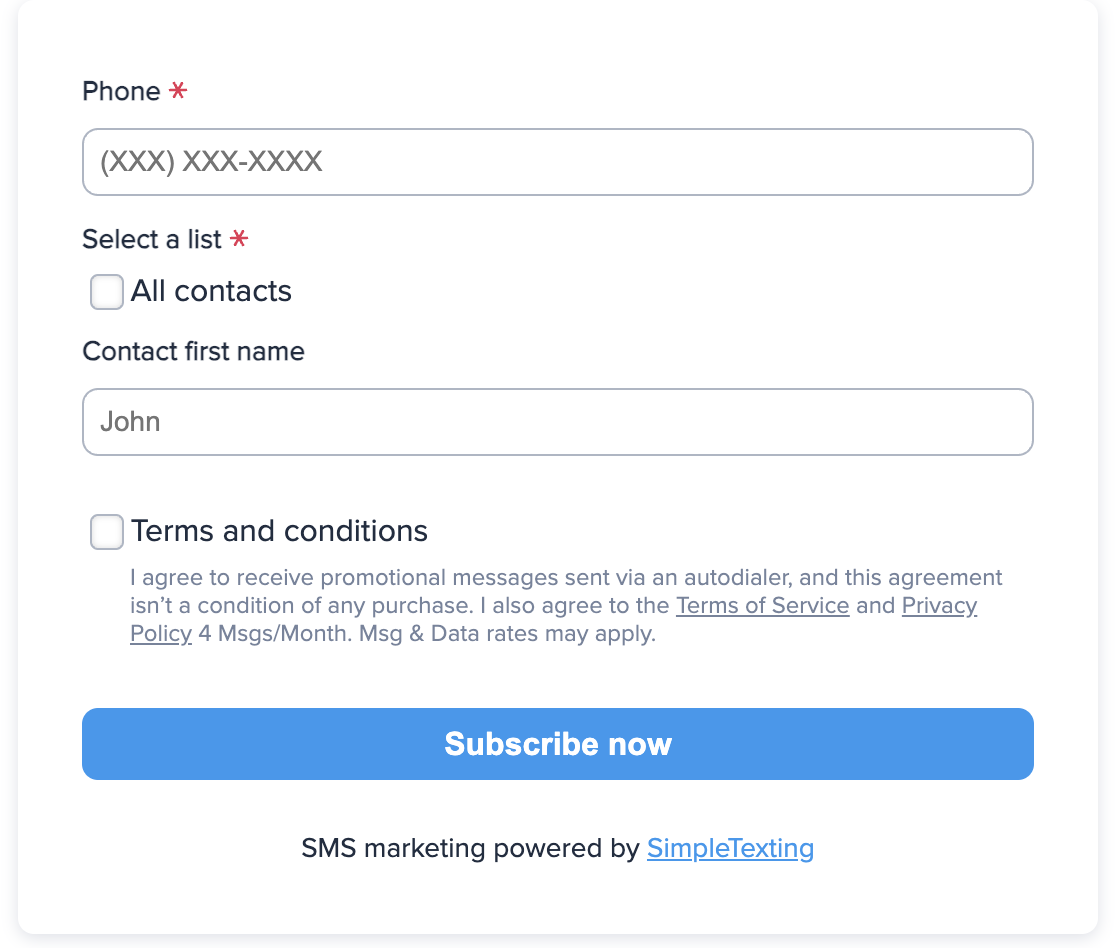
The type of personal data you’re collecting
Your privacy policy should let users know what type of personal data (names, phone numbers, etc.) you’re collecting.
Data collection method
List how you intend to collect users’ data. You should also state how you determine when a customer abandons a cart if you’ll be sending abandoned cart messages.
How you want to handle collected data
In addition to stating how you intend to collect data, you should also make clear how you want to handle collected data. This involves stating how you want to store and use it.
Reason for collecting data
State what you want to use the collected data to do. It could be to improve your SMS services or send notifications.
User rights
Let users know their rights regarding their data. These users can request to access, modify, or even delete their data.
You should also include details about third-party involvement (if any), opt-in and opt-out instructions, who your information is shared with, and how your information is kept secure.
How to find your privacy policy link in SimpleTexting
SimpleTexting provides a standard privacy policy for its customers. This section will show you what that looks like in the Web Forms feature.
You can use this process to copy the link and paste your privacy policy in your custom forms, if applicable, to make sure you remain compliant. Or you could copy/paste and modify the SMS compliance privacy policy language provided here within your website’s privacy policy.
Again, we’re not your lawyers, so we highly recommend seeking legal counsel before starting your SMS program and modifying items as important as your privacy policy.
- Click on “Apps” from your SimpleTexting dashboard. Then, click on “Web Sign-Up Forms.”

- Create a new form if you don’t already have one. Once you’ve created a form, click on “Get code.”
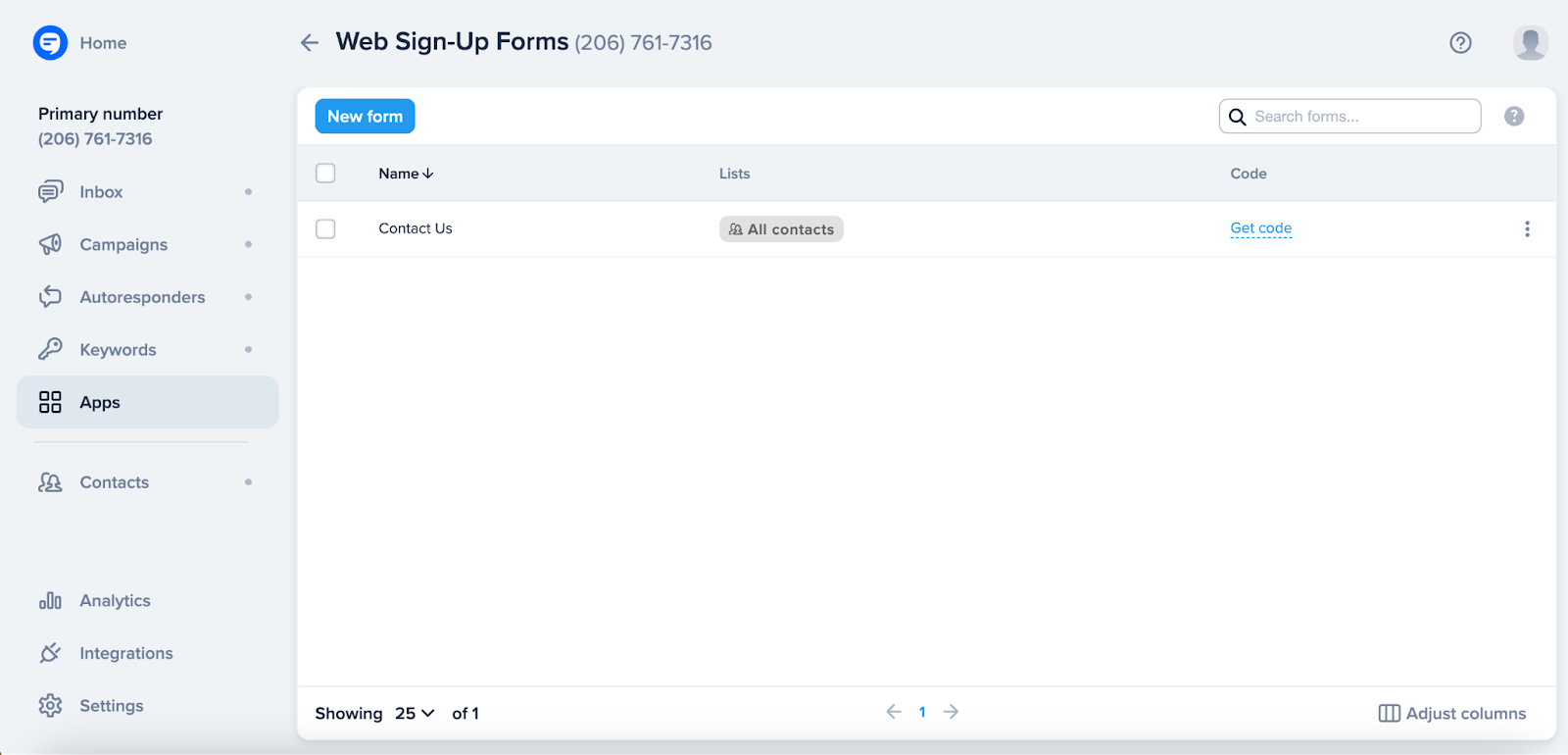
- Copy the link code.
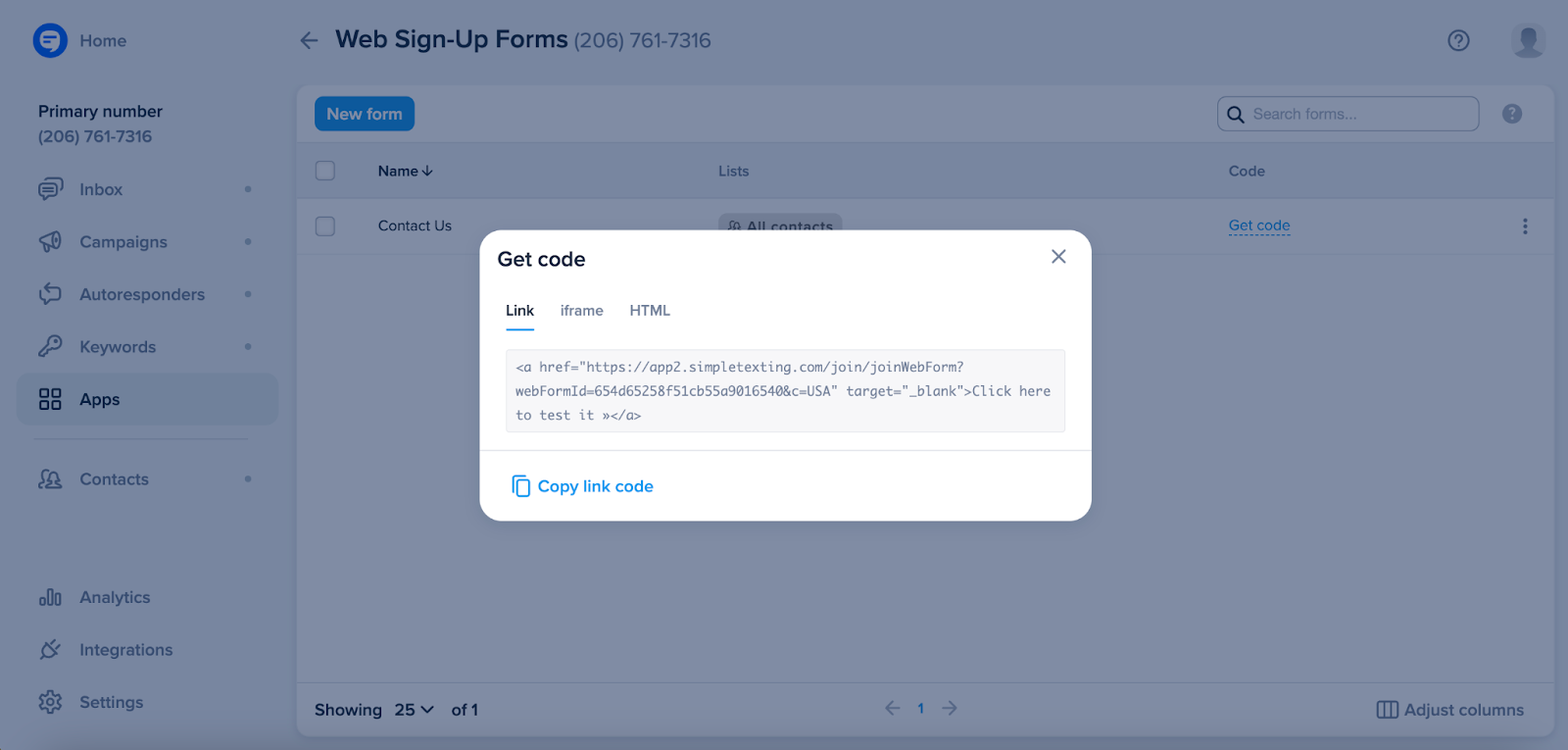
- Add the form’s embed code where you want on your site.

- Contacts can now see your privacy policy whenever they click the link.
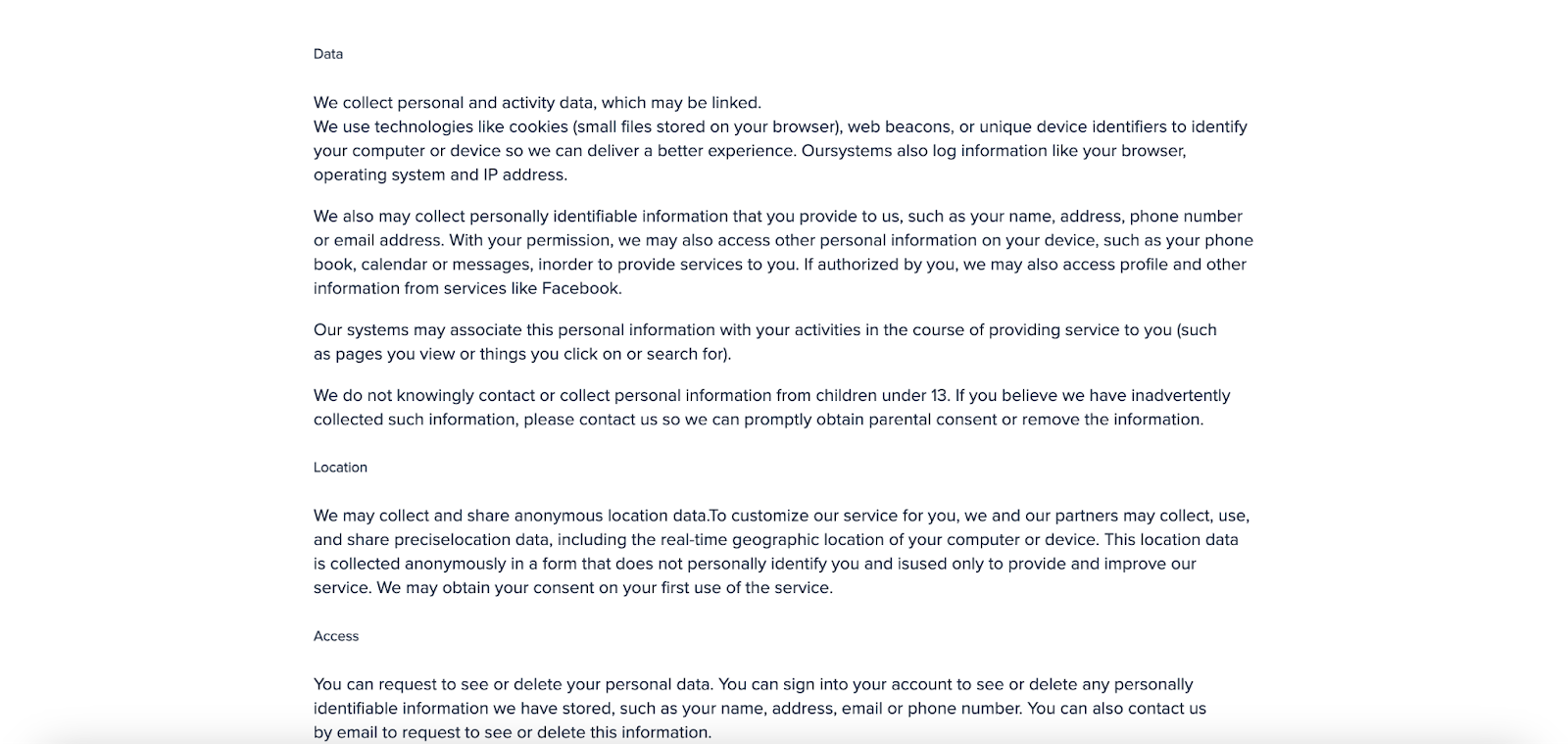
3 SMS compliance privacy policy examples
Looking for some real-life SMS compliance privacy policy examples? Here are some.
1. Unicef USA
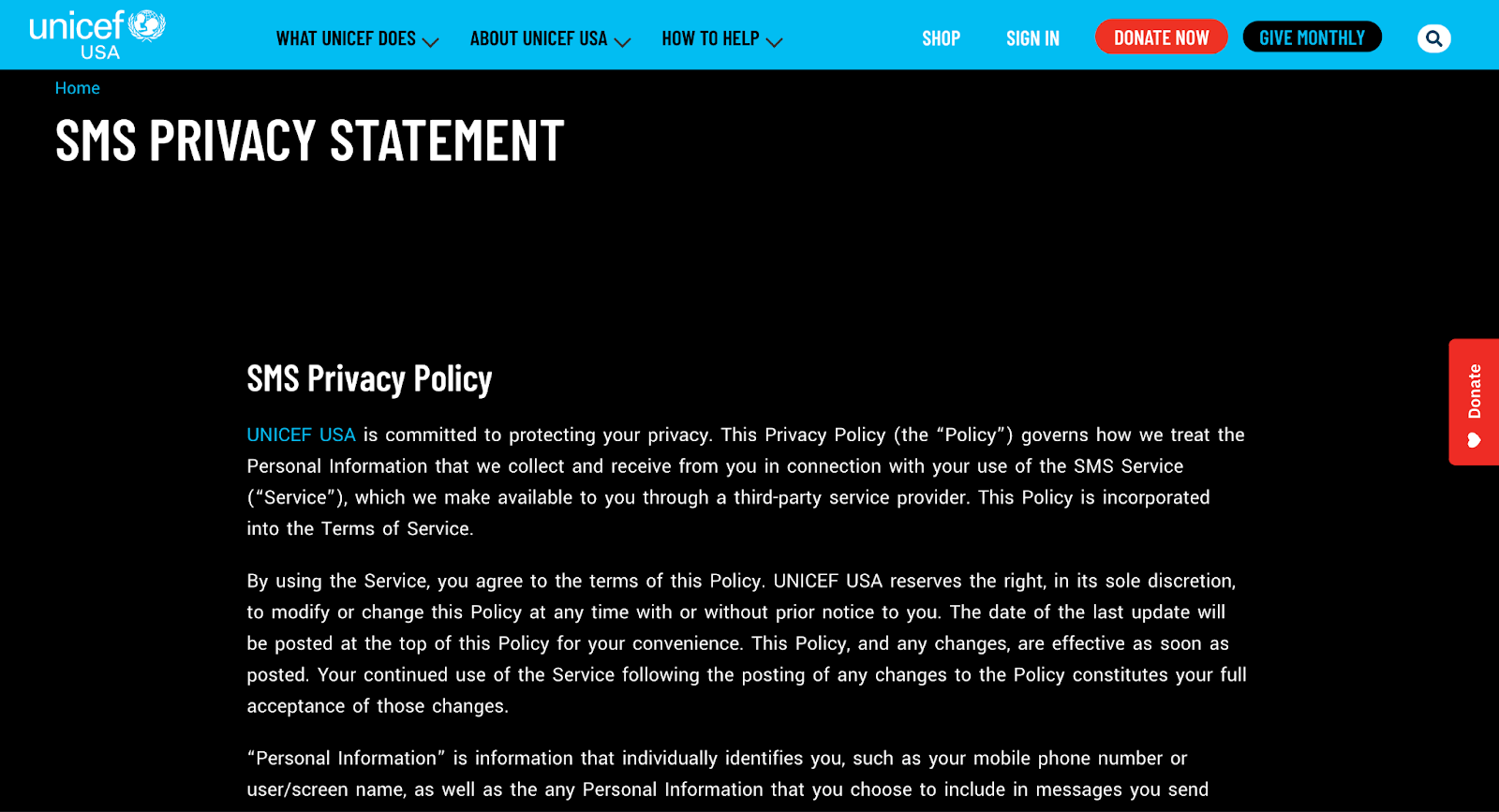
2. Girl Scouts
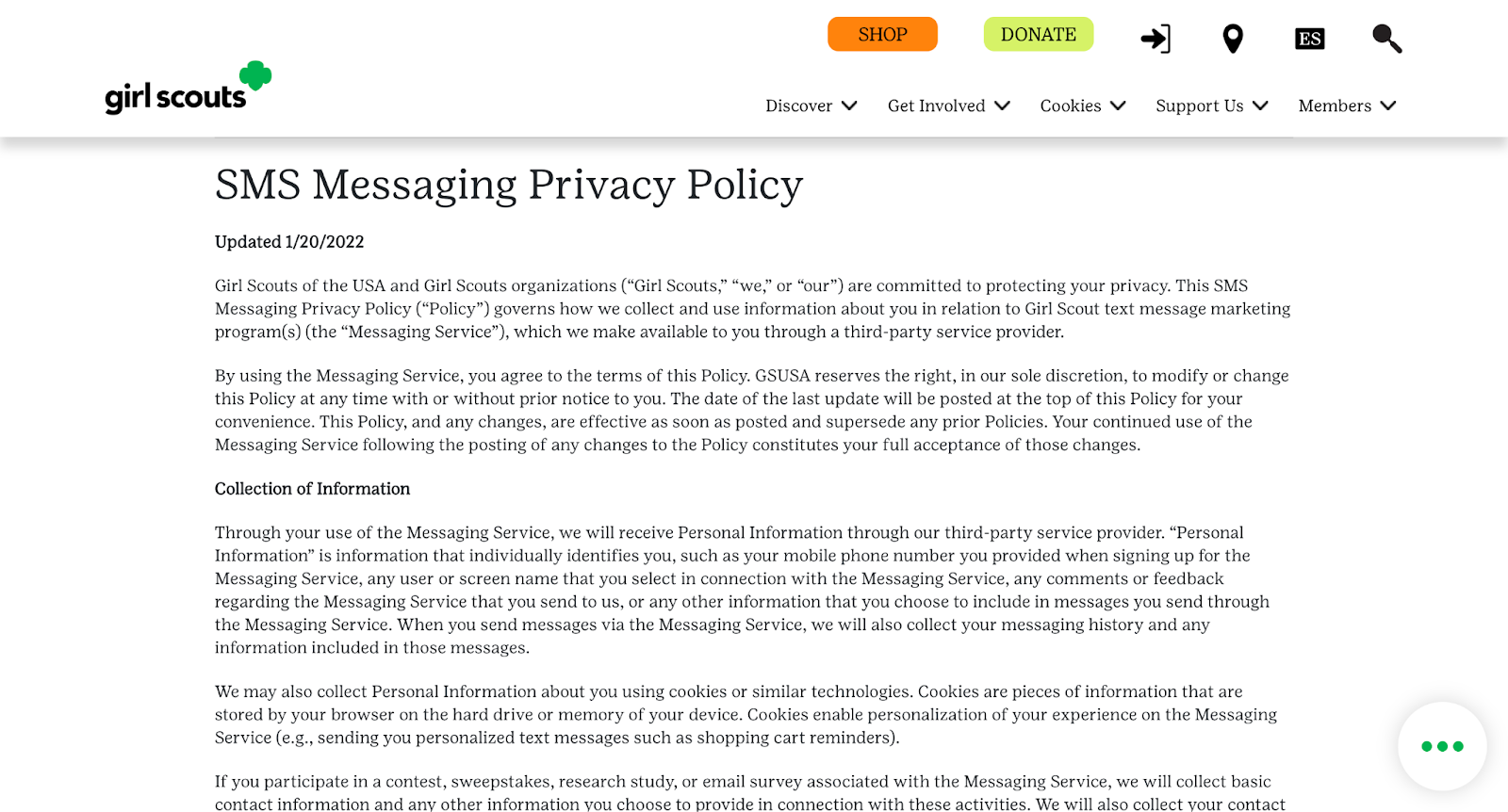
3. University of Michigan
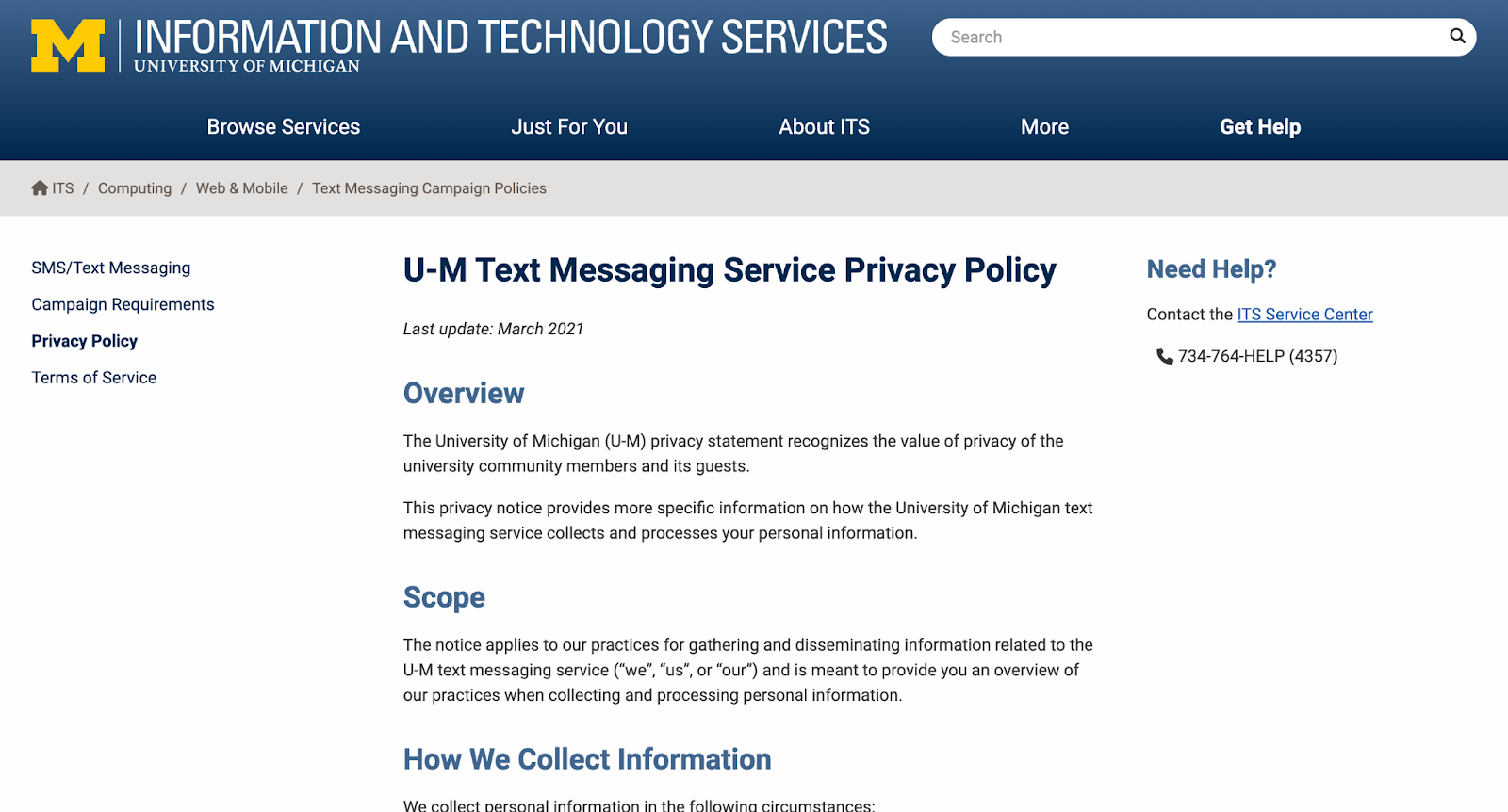
SMS compliance privacy policy template
Here’s a link to an example privacy policy document. This example is what your contacts will see when they click the link in your SimpleTexting web form to join your text list.
Why you need an SMS compliance privacy policy
You need an SMS privacy policy for the following reasons.
1. It is required by law
For starters, you must have a privacy policy because the law requires it.
For instance, businesses based in or operating out of Europe must comply with the General Data Protection Regulation (GDPR).
In the United States, businesses must comply with several federal and state laws like the Health Insurance Portability and Accountability Act (HIPAA), California Consumer Protection Act (CCPA), and so on.
Other parts of the world have their privacy rules and regulations as well.
2. Users want to know
People want to know how their personal information is used online. A privacy policy informs these users of the data you track and collect.
Such transparency builds trust and shows you care about their online safety and privacy.
3. 3rd-party services require it
3rd-party services manage a ton of data due to the number of companies that use them — as such, they require strong privacy policies.
So, if you ever intend to use any of these 3rd-party services, you’ll need a privacy policy, too.
Key takeaways
- When a privacy policy link is displayed, it should be labeled clearly.
- The privacy policy disclosures must provide up-to-date, accurate information about program details and functionality.
⚠️ This advice is for informational purposes only and is neither intended as nor should be substituted for consultation with appropriate legal counsel and/or your organization’s regulatory compliance team.
Nathan Ellering contributed to this piece.